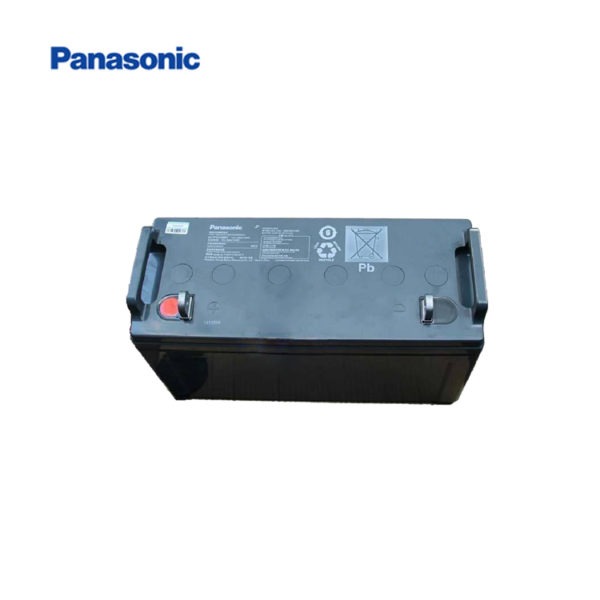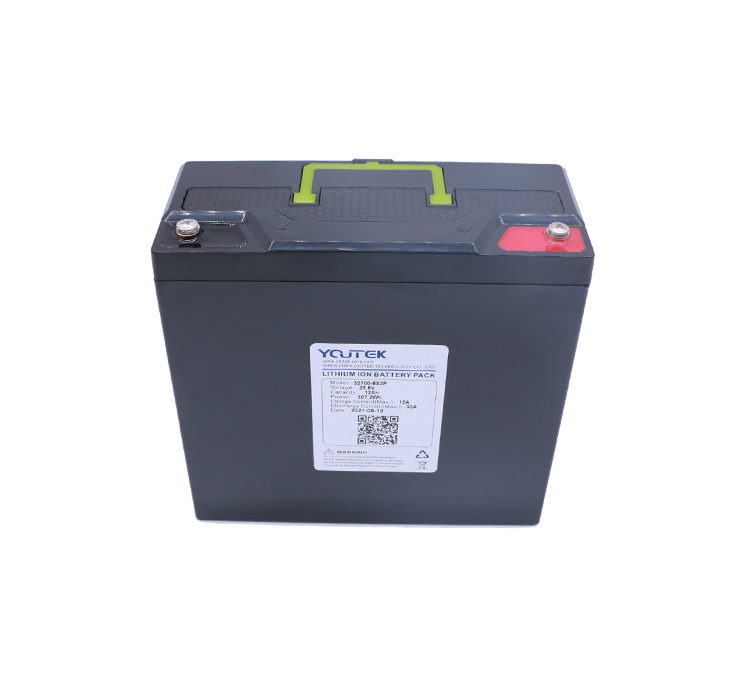
Jun 13, 2022 | Company News
There is a lot to be said for the storage of Panasonic batteries, if they are not stored properly they can seriously shorten their life and even be scrapped. So, for users, it is necessary to understand some general knowledge of battery storage.
First of all, the battery, whether unopened or after a period of time need to stop using more than a few months will be stored in a specific place, generally speaking, the battery storage have to have a designated warehouse. Not all warehouses are suitable for batteries, as they are a special product.
Secondly, the warehouse used to store Panasonic batteries must have good ventilation, because the liquid inside the battery is relatively easy to volatilise, if the surrounding environment is wet and humid, impurities in the air are likely to react with the liquid, thus leading to the effectiveness of the liquid, which will also affect the performance of the battery.
Finally, it is best to install thermometers and air conditioners in Panasonic battery storage warehouses to ensure that the room temperature is maintained at around 25°C, a temperature that is more conducive to battery storage. The air conditioning can be set to a constant temperature. It is also important to check that the room is dry every day, but dry does not mean that the batteries can be stored in direct sunlight.

Jun 10, 2022 | Company News
ABS shell performance ABS has good impact strength and surface hardness within a certain temperature range, good dimensional stability, certain chemical resistance and good electrical insulation. It is opaque, generally light ivory in colour, and can be made into any other colour product with a high degree of gloss by colouring, and electroplated grades can be decorated with electroplating and vacuum coating on the exterior. General purpose ABS is impervious to water, burns slowly, softens when burned, has a yellow flame, black smoke and eventually burns with a distinctive smell, but has no molten drops. The recommended drying conditions are a minimum of 2 hours at 82-91C. The temperature of the material should be less than 0.1%. Melting temperature: 211~281C; recommended temperature: 248C. Mould temperature: 26…72C. (Mould temperature will affect the finish of the moulded part, lower temperatures will result in a lower finish). Injection pressure: 501 to 1000 bar. Injection speed: medium to high speed.
1. ABS formula specially designed for good heat and glue sealing.
2、The material does not contain cadmium, chromium and other harmful toxic heavy metals, the production and application process will not cause any pollution to the environment, in line with ROHS certification requirements.
3, ABS has good fluidity, injection moulding is not easy to appear silver lines or air marks, good dimensional stability and good air tightness.
4, has good impact resistance, low-temperature environment by the impact does not crack.
5、ABS has high flame retardant efficiency, can give the composite material good self-extinguishing or incombustibility, meet UL94 standard.
6、Good heat resistance, not easy to bulge under high temperature when injection molding into shell.

Jun 9, 2022 | Company News
Nowadays, all new energy vehicles need to use batteries, and the battery casing plays the role of protector. Today’s modified plastics editorial will come together with you to get to know the lead-acid battery casing flame retardant ABS material.
The most obvious feature of the lead-acid battery is its top plastic seal cover that can be unscrewed, with ventilation holes on it. So what material is used for lead-acid battery shells?
It is understood that the general lead-acid battery shell is commonly used ABS, PP, PE and other materials, while the high-grade valve-controlled sealed battery is generally used ABS, non-valve-controlled battery is generally used PP, PE and so on. The shell of lead-acid battery is mainly used to hold the electrolyte and pole plate group, the shell should be acid-resistant, heat-resistant, shock-resistant, and previously made of hard rubber.
Flame-retardant ABS material for lead-acid batteries
Flame-retardant ABS material is a special material for lead-acid battery shells. It has.
① High efficiency of flame retardant, which can give the composite material good self-extinguishability or incombustibility and meet UL94 standard.
②Good heat resistance, not easy to bulge under high temperature when injection molding into the shell.
③Good fluidity, not easy to appear silver lines or air marks in injection moulding, good dimensional stability and good air tightness.
④Good impact resistance, low temperature environment by the impact does not crack.
⑤ Special design of the formula, good heat seal and glue seal effect.
⑥The material does not contain cadmium, chromium and other harmful toxic heavy metals, the production and application process will not cause any pollution to the environment, in line with ROHS certification requirements.

Jun 8, 2022 | Company News
According to data from the Ministry of Industry and Information Technology (MIIT), by the end of 2019, China had a total of 8.41 million mobile communication base stations. The huge number of base stations supports China’s fast-growing mobile internet industry and brings convenience to our work and life.
The battery pack is an important part of the uninterrupted power supply of the DC system for the communication base stations. Lead-acid batteries have the largest market share and the widest range of use among chemical batteries, especially in applications such as starting and large energy storage, and are difficult to be replaced by other new batteries in the longer term.
As a secondary power source with high safety, high resource regeneration rate and wide temperature range, lead-acid batteries are driven by the market and continue to grow at a high rate, and lead-acid battery casing materials are also of great interest. What material is the lead-acid battery casing?
The lead-acid battery shell has to withstand heavy pressure, withstand oxidation, withstand corrosion and resist high temperatures.
Because.
1, lead-acid batteries use a high specific gravity of lead (specific gravity: 11.3), so that the shell material does not have a certain pressure-bearing capacity is not possible.
2, the lead-acid battery internal active material in the energy conversion process, there is oxidation reaction, so the shell material needs to withstand oxidation.
3、The electrolyte of lead-acid battery is dilute sulphuric acid solution, and the corrosiveness of sulphuric acid is very strong, so the shell material must be able to withstand corrosion.
4, lead-acid battery in the charging process to produce part of the heat, the use of the environment may also be very high temperature, such as near the engine of the car, the temperature is about 70 degrees, such a high temperature, as the shell material must ensure that no deformation.
So, what are the lead-acid battery casing materials that must also meet this requirement?
Flame-retardant ABS material for lead-acid battery casings, which is.
has a high flame retardant efficiency, giving the composite material good self-extinguishing or flame retardant properties, meeting UL94 standards.
has good heat resistance and is not easily bulged at high temperatures when injection moulded into the shell.
Good flowability, not easy to appear silver lines or air marks in injection moulding, good dimensional stability and good air tightness.
Good impact resistance, low temperature environment impact does not crack.
Special design of the formula, good heat and glue seal effect.
The material does not contain cadmium, chromium and other harmful toxic heavy metals, the production and application process will not cause any pollution to the environment, in line with ROHS certification requirements.
We hope that the environmentally friendly and non-polluting modified plastic pellets will improve the environment around us and help realise our common “green dream”, and we look forward to the “new connection and new speed” from the world’s highest peak 5G signal to the accelerated development of new infrastructure. We look forward to a new speed in industrial transformation and smart upgrading in our country!

Jun 7, 2022 | Company News
A power battery system is used to provide energy for the drive of an electric vehicle and serves as a storage device for the vehicle’s capacity, consisting of one or more battery packs and a battery management system. The power battery module is one of the secondary structures of the power battery system, which is made up of the power battery cells combined in series and parallel and protected by a circuit board and housing.
Plastic is the material of choice for the structural components of power battery modules because of its advantages of insulation, ease of processing and light weight. In response to the design needs of battery modules, material suppliers offer a wide range of materials to meet battery assembly and safety requirements.
Currently, pure electric vehicles are equipped with power batteries, mostly based on ternary lithium materials. Although the energy density of battery materials has been greatly improved, it is still difficult to break the mileage anxiety of consumers. To improve the energy density of power batteries, in addition to further improving the energy density of battery materials, the overall weight reduction of battery packs is also a practical method.
ABS resin is a terpolymer, a complex polymer blending system that combines the advantages of three components: acrylonitrile can ABS resins combine the advantages of three components: acrylonitrile gives the resin high strength, heat resistance and chemical resistance; butadiene gives the resin elasticity and improves impact strength; and styrene gives it excellent electrical properties and good moulding and processing properties. However, its application is limited by its poor heat and weather resistance. Polycarbonate (PC) is an amorphous polymer with good toughness and excellent rigidity, impact resistance and dimensional stability over a wide range of temperatures. Compared to ABS, the ABS/PC alloy improves heat and weather resistance to meet the requirements of new energy vehicle module housings and provides a practical solution to customers’ battery weight reduction needs.



